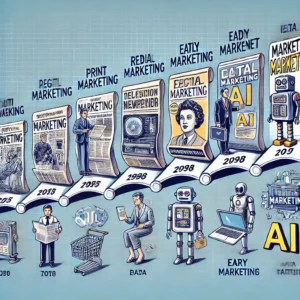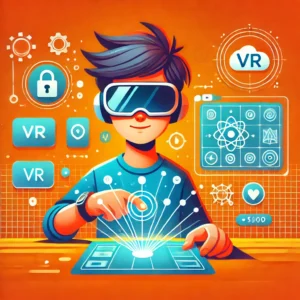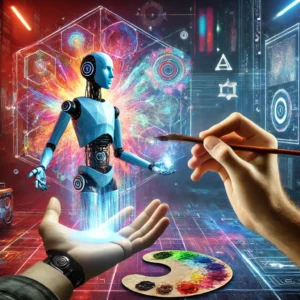Artificial intelligence (AI) has revolutionized numerous industries, from healthcare to entertainment. One of the most intriguing yet controversial applications of AI is deepfake technology. While deepfakes showcase impressive innovations in machine learning and digital media, they also pose significant threats, including misinformation, identity fraud, and social manipulation.
This blog explores the impact of AI-generated deepfakes, their benefits, risks, and ethical concerns, and how we can mitigate the challenges associated with this emerging technology.
What Are AI-Generated Deepfakes?
Deepfakes are hyper-realistic videos, images, or audio recordings created using deep learning techniques, particularly Generative Adversarial Networks (GANs). These AI-generated media manipulate or replace existing content, making it appear as if someone said or did something they never actually did.
Deepfake technology uses vast datasets to train AI models, allowing them to mimic voices, facial expressions, and body language with uncanny accuracy. The technology is increasingly sophisticated, making it difficult to distinguish real from fake content.
The Innovation Behind Deepfakes
Deepfakes have transformed various industries, demonstrating AI’s creative and technological potential. Below are some positive applications:
1. Entertainment and Film Industry
- Deepfake technology enables filmmakers to de-age actors, revive deceased celebrities, or enhance visual effects seamlessly.
- Studios can create realistic CGI characters without extensive manual animation.
2. Education and Training
- AI-generated historical reenactments bring history to life for students.
- Deepfake simulations are used in medical training, military exercises, and corporate learning programs.
3. Marketing and Advertising
- Brands personalize advertisements using AI-generated influencers and virtual brand ambassadors.
- Companies use deepfake technology to create hyper-realistic voiceovers for product promotions.
4. Accessibility and Inclusivity
- AI-driven lip-syncing technology assists speech-impaired individuals in communication.
- Deepfakes are used for real-time language translations in video content.
The Dark Side of Deepfakes: Misinformation and Risks
Despite their promising applications, deepfakes have also become a weapon for misinformation and deception. Some major risks include:
1. Political Manipulation
- Deepfake videos are increasingly used to spread false political narratives and propaganda.
- Malicious actors can create fake speeches or alter political debates to mislead voters.
2. Cybersecurity Threats and Identity Fraud
- Fraudsters use deepfake voice and video technology to impersonate executives and carry out financial fraud.
- Cybercriminals create AI-generated synthetic identities for illegal activities.
3. Defamation and Personal Reputation Damage
- Deepfake pornography has emerged as a serious issue, with victims facing irreparable damage to their reputations.
- Fake videos and audio clips can ruin careers and relationships.
4. Legal and Ethical Challenges
- Current laws struggle to keep up with AI-generated misinformation.
- Ethical concerns arise over the consent and privacy of individuals featured in deepfake media.
How to Detect and Combat Deepfakes
With deepfake technology becoming more advanced, it is crucial to develop strategies to detect and mitigate their impact.
1. AI-Powered Detection Tools
- Companies like Facebook, Microsoft, and Google are developing AI models to identify deepfake content.
- Machine learning algorithms analyze pixel inconsistencies and unnatural facial movements to flag manipulated content.
2. Blockchain for Digital Verification
- Blockchain technology provides a decentralized way to verify the authenticity of videos and images.
- Watermarking and cryptographic hashing techniques help detect tampering in digital content.
3. Legislative Measures and Regulations
- Governments are implementing policies to criminalize malicious deepfake usage.
- Countries like the U.S. and China have introduced laws requiring disclosure of AI-generated media.
4. Public Awareness and Media Literacy
- Educating individuals about deepfake risks and how to identify fake content is crucial.
- Social media platforms are introducing fact-checking tools to limit the spread of misinformation.
The Future of Deepfake Technology
The future of deepfakes remains uncertain, with both promising innovations and ethical dilemmas on the horizon. While AI-generated media can enhance creativity and accessibility, ensuring responsible usage is imperative. Businesses, policymakers, and individuals must collaborate to create ethical guidelines and technological safeguards.
By striking a balance between innovation and regulation, we can harness deepfake technology’s benefits while minimizing its risks.
#Deepfake #AI #ArtificialIntelligence #DeepfakeTechnology #Misinformation #CyberSecurity #MachineLearning #GANs #AIInnovation #FakeNews #MediaManipulation #DigitalFraud #AIResearch #Blockchain #TechEthics #FutureOfAI #DeepfakeDetection #TechTrends #OnlineSafety #EthicalAI




